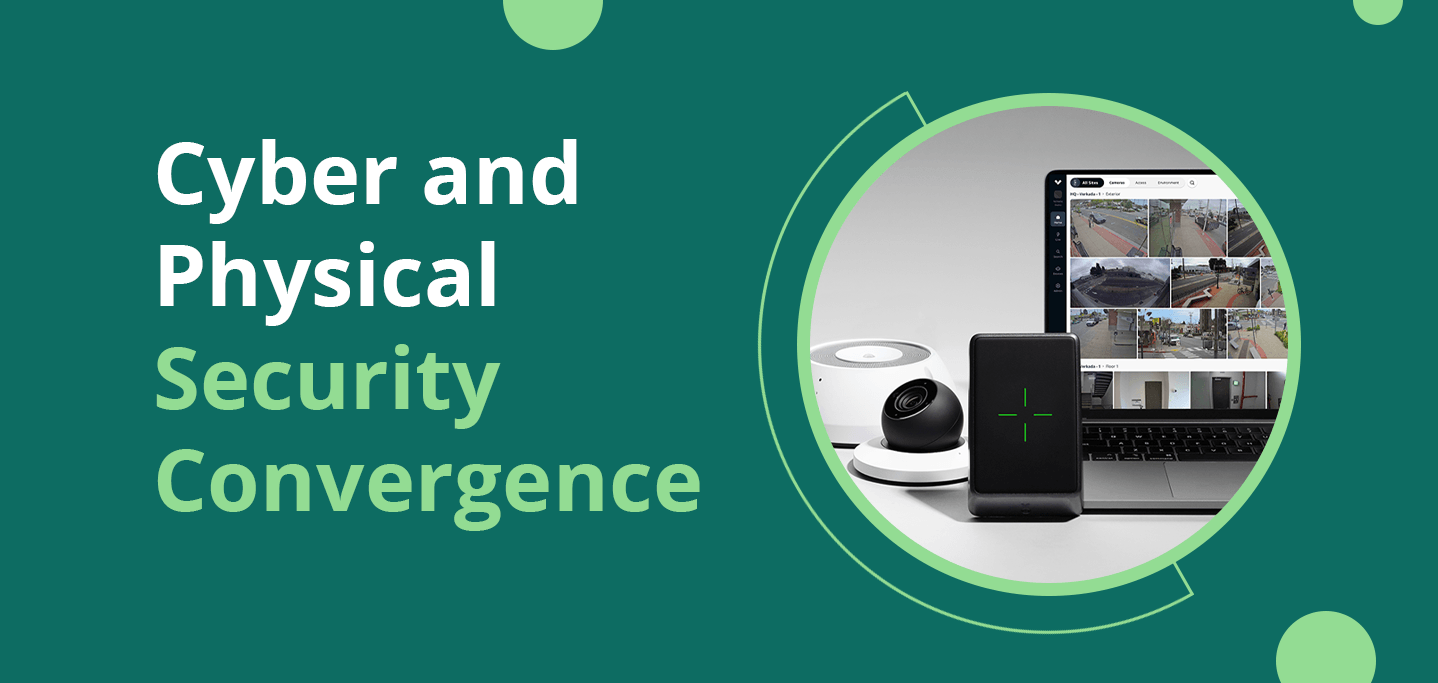Physical security systems, like surveillance cameras and access controls, are often managed independently of network firewalls and other connected devices. But a siloed approach to managing these technologies comes with risks.
Increasingly, disparate physical systems and digital infrastructures are converging. Strategic cybersecurity and physical security convergence is a priority for many organizations, especially in light of ransomware attacks that exploit weaknesses in physical security systems.
A disconnect between various systems brings additional risks beyond cyberattacks, though. Here, we’ll identify what a security convergence strategy might look like, its benefits, potential pitfalls, and next steps.
What is Security Convergence?
Security convergence brings together disparate physical and cloud-based systems to help ensure optimal security and congruence across an organization. Security convergence helps to break down silos and create collaboration and transparency among facility teams and IT teams who manage physical and cyber technologies.
By implementing a security convergence strategy, companies can guard their reputation, improve efficiencies, and minimize potential risks.
Example of a Cyber Attack on a Physical Security System
Cybercriminals often see IoT devices as the path of least resistance to companies and may leverage vulnerabilities to steal data, extort money, compromise trusted third parties, and even intentionally cause operational disruption.
A potential cyberattack scenario is a company that installed security cameras that are monitored remotely over a network. Without proactively embracing a converged security program and having a working partnership between the physical security and cybersecurity teams, each might assume the other addressed any security gaps such as changing default passwords or other steps. Sometimes, access to compromised corporate security systems is sold to the highest bidder on the dark web.
RELATED RESOURCE: Access Control & Purchasing Guide
Benefits of Security Convergence
There are benefits of security convergence that go far beyond cybersecurity. In recent years, there’s been a push for single sign-on technologies where users have a corporate account to log into various systems. A user’s password becomes their corporate identity and can track activities on both physical and digital control devices. For example, a badge card reader can be tied to a Microsoft account. It can indicate when an individual logs onto a computer or when they walk into a conference room for a meeting.
Corporate identity management is a big buzzword right now. These types of converged technologies provide insights into how people work and can centralize security monitoring and controls. If someone is terminated, their badge can be turned off to instantly suspend their account, removing unauthorized access to servers, email, and restricted areas in a building. HR doesn’t need to notify multiple departments to remove permissions independently, minimizing the potential for something to get missed.
Security convergence is also being leveraged for energy gains when corporate identities are linked with a building’s environmental controls. For example, through machine learning and AI capabilities, a system can learn that a room is always occupied on Saturdays for a four-hour block of time and automatically adjust the HVAC.
Convergence benefits organizations in more ways than just their business security management. It all feeds into a company’s overall structure to make systems easier to manage, and creates a more pleasant experience for end users.
Potential Challenges of Security Convergence
For brands with multiple locations, it used to be common for security cameras to be managed at a branch level with a person monitoring a single building. Security convergence allows individuals to view camera feeds across locations, helping to reduce labor costs. The challenge comes in monitoring and managing hundreds of cameras in various cities versus only a few. Likewise, if an issue is detected at a location, the individual who is monitoring needs to know where the threat is occurring, who to notify, and which municipal authorities need to be alerted.
Fortunately, the emergence of artificial intelligence (AI) automation is helping to centralize systems and trigger proper alerts. As AI enhancements become more robust, the task of monitoring will become less labor-intensive.
RELATED: AI in Retail Security eBook
Another concern with converged security is privacy. AI can follow individuals throughout a building and capture a snapshot of their activities. It may even be able to identify individuals through facial recognition. Some may question the ethical boundaries of such monitoring, and corporations will need to adopt clear policies to address privacy concerns.
Steps to Implementing a Security Convergence Strategy
Creating transparency among departments is the bedrock of a security convergence strategy. Having a conversation between facility teams and IT teams is a great place to start. Together, they can identify potential vulnerabilities and create protocols for each to follow.
Fortunately, converged technologies don’t need to be implemented all at once. As your organization looks to refresh its tech stacks, leverage systems that enable convergence so you aren’t spending money on technologies that will be obsolete in a few years. You could start by looking at your access control systems and expanding from there. For information on access controls, be sure to check out our Access Control & Purchasing Guide below.
An experienced technology integrator can help you blend your existing tech with newer cloud-based equipment. As systems are updated, your technology partner can integrate solutions that are flexible and accommodate advancements down the road.
The main driver of security convergence is connectivity and making sure you have the right infrastructure that is properly configured and can support cloud platforms. ASD specializes in integrating flexible technology and providing strategic guidance. Contact our team today to talk through your needs. We’ll help you identify potential gaps and get you started on a path to a holistic and sustainable security convergence strategy.



Leave a Comment